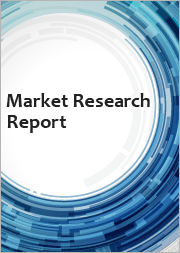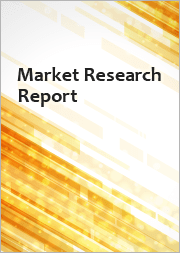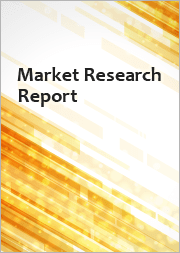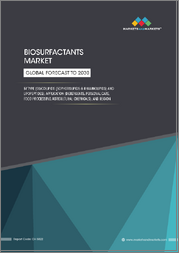
|
시장보고서
상품코드
1668775
유럽의 PFAS 화학제품 시장 : 제품, 용도, 국가별 분석, 예측(2024-2034년)Europe PFAS Chemicals Market: Focus on Product, Application, and Country Level Analysis - Analysis and Forecast, 2024-2034 |
||||||
유럽 PFAS 화학제품 시장 규모는 2024년 73억 1,000만 달러로 평가되었고, 예측 기간 동안 5.47%의 연평균 복합 성장률(CAGR)를 나타낼 전망이며, 2034년에는 124억 6,000만 달러에 달할 것으로 예측되고 있습니다.
유럽의 PFAS 화학제품 시장은 법규의 강화와 환경의 지속가능성에 중점을 두어 크게 성장할 것으로 예상됩니다. 보다 안전한 대체품에 대한 요구는 PFAS 노출과 관련된 건강 피해에 대한 사회적 인식에 의해 높아지고 있습니다. 안전과 기술 혁신에 초점을 맞춘 감지 및 정화 기술의 발전은 보다 깨끗한 산업 관행과 엄격한 규제 준수를 촉진하면서 PFAS 관리에 혁명을 일으키고 있습니다.
| 주요 시장 통계 | |
|---|---|
| 예측 기간 | 2024-2034년 |
| 2024년 평가 | 73억 1,000만 달러 |
| 2034년 예측 | 124억 6,000만 달러 |
| CAGR | 5.47% |
유럽의 PFAS 화학제품 시장은 규제 당국의 모니터링 강화와 환경 지속성에 대한 노력으로 인해 상당한 성장이 예상됩니다. 영원한 화학 물질로 알려진 퍼플루오로알킬 물질과 폴리플루오로알킬 물질(PFAS)은 환경 잔류성과 건강에 악영향을 미칠 가능성에 관심이 있습니다. 이들 화학물질에 대한 노출의 위험성에 대한 인식이 높아지고 있는 가운데, 민관 모두 오염 문제에 대처하고 PFAS에 대한 의존을 줄이기 위한 적극적인 행동이 취해지고 있습니다.
다양한 산업의 기업들이 보다 안전하고 환경친화적인 대체물질을 찾기 위한 연구개발과 보다 우수한 검출기술의 개발에 자금을 투자하고 있으며, 이러한 대체물질에 대한 수요 증가에 대응하고 있습니다. 금지와 제한을 포함한 엄격한 규제가 기술 혁신을 촉진하고, PFAS 프리 제품이나 고도의 정화 및 여과 시스템의 신기술 개발을 뒷받침하고 있습니다.
시장 세분화
세분화 1: 용도별
- 건축 및 건설
- 일렉트로닉스
- 화학(석유 화학 포함)
- 금속조
- 페인트 및 코팅
- 발포제, 냉매 및 냉각제, 난연제
- 플라스틱 및 고무 제조
- 기타
세분화 2: 제품 유형별
- 플루오로테트라머계 물질
- 퍼플루오로알칸술포닐계 물질
- 퍼플루오로알킬카르보닐계 물질
- 퍼플루오로(폴리)에테르계 물질
- 플루오로폴리머
- 기타
세분화 3: 국가별
- 독일
- 영국
- 프랑스
- 이탈리아
- 스페인
- 기타
본 보고서에서는 유럽의 PFAS 화학제품 시장을 조사했으며, 주요 동향, 시장 영향요인 분석, 법 규제 환경, 기술 개발 및 특허 동향, 사례 연구, 시장 규모 추이와 예측, 각종 구분 및 주요 국가별 상세 분석, 경쟁 구도, 주요 기업 프로파일 등을 정리했습니다.
목차
주요 요약
범위 및 정의
제1장 시장
- 동향 : 현재 및 미래의 영향 평가
- PFAS의 정화와 환경 정화 기술에 대한 주목
- 다양한 산업에 있어서의 불소 폴리머의 폭넓은 용도
- 공급망 개요
- 밸류체인 분석
- 가격 예측
- 연구개발 리뷰
- 특허 출원 동향(국가·기업별)
- 규제 상황
- PFAS의 잠재 시장 규모
- 이해관계자 분석
- 이용 사례
- 주요 세계 이벤트의 영향 분석
- 시장 역학 개요
- 시장 성장 촉진요인
- 시장 성장 억제요인
- 시장 기회
제2장 지역
- 지역별 개요
- 추진 요인 및 억제요인
- 유럽(국가별)
제3장 시장 : 기업 프로파일
- 다음 프론티어
- 지리적 평가
- Archroma
- Arkema
- BASF
- Bayer AG
- Merck KGaA
- Solvay
제4장 조사 방법
SHW 25.03.18Introduction to Europe PFAS Chemicals Market
The Europe PFAS chemicals market is projected to reach $12.46 billion by 2034 from $7.31 billion in 2024, growing at a CAGR of 5.47% during the forecast period 2024-2034. Europe's market for PFAS chemicals is expected to grow significantly due to tighter laws and a greater emphasis on environmental sustainability. The need for safer substitutes is being driven by public awareness of the health hazards associated with PFAS exposure. With a focus on safety and innovation, advances in detection and remediation technologies are revolutionizing the management of PFAS by promoting cleaner industrial practices and more stringent regulatory compliance.
Market Introduction
| KEY MARKET STATISTICS | |
|---|---|
| Forecast Period | 2024 - 2034 |
| 2024 Evaluation | $7.31 Billion |
| 2034 Forecast | $12.46 Billion |
| CAGR | 5.47% |
The market for PFAS chemicals in Europe is expected to grow significantly as a result of heightened regulatory scrutiny and growing environmental sustainability commitment. Known as "forever chemicals," per- and polyfluoroalkyl substances (PFAS) are drawing more attention because of their environmental persistence and possible negative health effects. Both the public and private sectors are acting proactively to address contamination issues and lessen dependency on PFAS as awareness of the dangers of exposure to these chemicals increases.
Businesses from a variety of industries are spending money on research and development to find safer, more eco-friendly alternatives as well as better detection techniques in response to the growing demand for these alternatives. Stringent regulations, including bans and restrictions, are driving innovation and encouraging the development of new technologies for PFAS-free products, as well as advanced remediation and filtration systems.
Furthermore, the shift towards greener industrial processes, combined with increased public concern about PFAS pollution, is reshaping how industries approach production and waste management. Additionally, market participants are concentrating on enhancing detection methods, cleaning up the environment, and complying with stricter laws. These factors will influence the PFAS chemicals market in Europe, where innovation, safety, and environmental responsibility are essential to its future expansion.
Market Segmentation
Segmentation 1: by Application
- Building and Construction
- Electronics Industry
- Chemical Industry (including Petrochemicals)
- Metal Manufacturing
- Paints and Coatings
- Blowing Agents, Refrigerants and Coolants, and Flame Retardants
- Production of Plastics and Rubber
- Others
Segmentation 2: by Product Type
- Fluorotelomer-Based Substances
- Perfluoroalkane Sulfonyl-Based Substances
- Perfluoroalkyl Carbonyl-Based Substances
- Perfluoro(poly)ether-Based Substances
- Fluoropolymers
- Others
Segmentation 3: by Country
- Germany
- U.K.
- France
- Italy
- Spain
- Rest-of-Europe
How can this report add value to an organization?
Product/Innovation Strategy: This report provides a comprehensive product/innovation strategy for the Europe PFAS chemicals market, identifying opportunities for market entry, technology adoption, and sustainable growth. It offers actionable insights, helping organizations to meet environmental standards, gain a competitive edge, and capitalize on the increasing demand for eco-friendly solutions in various industries.
Growth/Marketing Strategy: This report offers a comprehensive growth and marketing strategy designed specifically for the Europe PFAS chemicals market. It presents a targeted approach to identifying specialized market segments, establishing a competitive advantage, and implementing creative marketing initiatives to optimize market share and financial performance. By harnessing these strategic recommendations, organizations can elevate their market presence, seize emerging prospects, and efficiently propel revenue expansion.
Competitive Strategy: This report crafts a strong competitive strategy tailored to the Europe PFAS chemicals market. It evaluates market rivals, suggests stand-out methods, and offers guidance for maintaining a competitive edge. By adhering to these strategic directives, companies can position themselves effectively in the face of market competition, ensuring sustained prosperity and profitability.
Key Market Players and Competition Synopsis
The companies profiled in the report have been selected based on input gathered from primary experts and analyzing company coverage, product portfolio, and market penetration.
Some of the prominent names in this market are:
- Archroma
- Arkema
- BASF
- Bayer AG
- Merck KGaA
- Solvay
Table of Contents
Executive Summary
Scope and Definition
1 Markets
- 1.1 Trends: Current and Future Impact Assessment
- 1.1.1 Increasing Focus on PFAS Remediation and Environmental Cleanup Technologies
- 1.1.2 Extensive Applications of Fluoropolymers across Various Industries
- 1.2 Supply Chain Overview
- 1.2.1 Value Chain Analysis
- 1.2.2 Pricing Forecast
- 1.3 Research and Development Review
- 1.3.1 Patent Filing Trend (by Country and Company)
- 1.4 Regulatory Landscape
- 1.5 Total Addressable Market for PFAS
- 1.6 Stakeholder Analysis
- 1.6.1 Use Case
- 1.6.1.1 Government and Regulatory Bodies
- 1.6.1.2 Manufacturers and Industrial Users
- 1.6.1.3 Environmental and Public Health Advocates
- 1.6.1.4 Consumers and the General Public
- 1.6.1 Use Case
- 1.7 Impact Analysis for Key Global Events
- 1.8 Market Dynamics Overview
- 1.8.1 Market Drivers
- 1.8.1.1 Critical Role of PFAS in High-Performance Industries
- 1.8.1.2 Rising Demand for PFAS in Consumer Goods Driven by Performance Benefits
- 1.8.2 Market Restraints
- 1.8.2.1 Financial and Legal Liabilities Hindering PFAS Market Expansion
- 1.8.2.2 Detrimental Impact on Human Health Impeding Market Growth
- 1.8.3 Market Opportunities
- 1.8.3.1 Growing Demand in Electronics and Aerospace
- 1.8.3.2 Sustained Use in Consumer Goods Despite Regulatory Pressure
- 1.8.1 Market Drivers
2 Regions
- 2.1 Regional Summary
- 2.2 Drivers and Restraints
- 2.2.1 Europe (by Country)
- 2.2.1.1 Germany
- 2.2.1.1.1 Application
- 2.2.1.1.2 Product
- 2.2.1.2 Italy
- 2.2.1.2.1 Application
- 2.2.1.2.2 Product
- 2.2.1.3 U.K.
- 2.2.1.3.1 Application
- 2.2.1.3.2 Product
- 2.2.1.4 France
- 2.2.1.4.1 Application
- 2.2.1.4.2 Product
- 2.2.1.5 Spain
- 2.2.1.5.1 Application
- 2.2.1.5.2 Product
- 2.2.1.6 Rest-of-Europe
- 2.2.1.6.1 Application
- 2.2.1.6.2 Product
- 2.2.1.1 Germany
- 2.2.1 Europe (by Country)
3 Markets - Company Profiles
- 3.1 Next Frontiers
- 3.2 Geographic Assessment
- 3.2.1 Archroma
- 3.2.1.1 Overview
- 3.2.1.2 Top Products/Product Portfolio
- 3.2.1.3 Top Competitors
- 3.2.1.4 Target End-Use Industries
- 3.2.1.5 Key Personnel
- 3.2.1.6 Analyst View
- 3.2.1.7 Market Share, 2023
- 3.2.2 Arkema
- 3.2.2.1 Overview
- 3.2.2.2 Top Products/Product Portfolio
- 3.2.2.3 Top Competitors
- 3.2.2.4 Target End-User Industries
- 3.2.2.5 Key Personnel
- 3.2.2.6 Analyst View
- 3.2.2.7 Market Share, 2023
- 3.2.3 BASF
- 3.2.3.1 Overview
- 3.2.3.2 Top Products/Product Portfolio
- 3.2.3.3 Top Competitors
- 3.2.3.4 Target End-User Industries
- 3.2.3.5 Key Personnel
- 3.2.3.6 Analyst View
- 3.2.3.7 Market Share, 2023
- 3.2.4 Bayer AG
- 3.2.4.1 Overview
- 3.2.4.2 Top Products/Product Portfolio
- 3.2.4.3 Top Competitors
- 3.2.4.4 Target End-Use Industries
- 3.2.4.5 Key Personnel
- 3.2.4.6 Analyst View
- 3.2.4.7 Market Share, 2023
- 3.2.5 Merck KGaA
- 3.2.5.1 Overview
- 3.2.5.2 Top Products/Product Portfolio
- 3.2.5.3 Top Competitors
- 3.2.5.4 Target End-User Industries
- 3.2.5.5 Key Personnel
- 3.2.5.6 Analyst View
- 3.2.5.7 Market Share, 2023
- 3.2.6 Solvay
- 3.2.6.1 Overview
- 3.2.6.2 Top Products/Product Portfolio
- 3.2.6.3 Top Competitors
- 3.2.6.4 Target End-User Industries
- 3.2.6.5 Key Personnel
- 3.2.6.6 Analyst View
- 3.2.6.7 Market Share, 2023
- 3.2.1 Archroma
4 Research Methodology
- 4.1 Data Sources
- 4.1.1 Primary Data Sources
- 4.1.2 Secondary Data Sources
- 4.1.3 Data Triangulation
- 4.2 Market Estimation and Forecast







